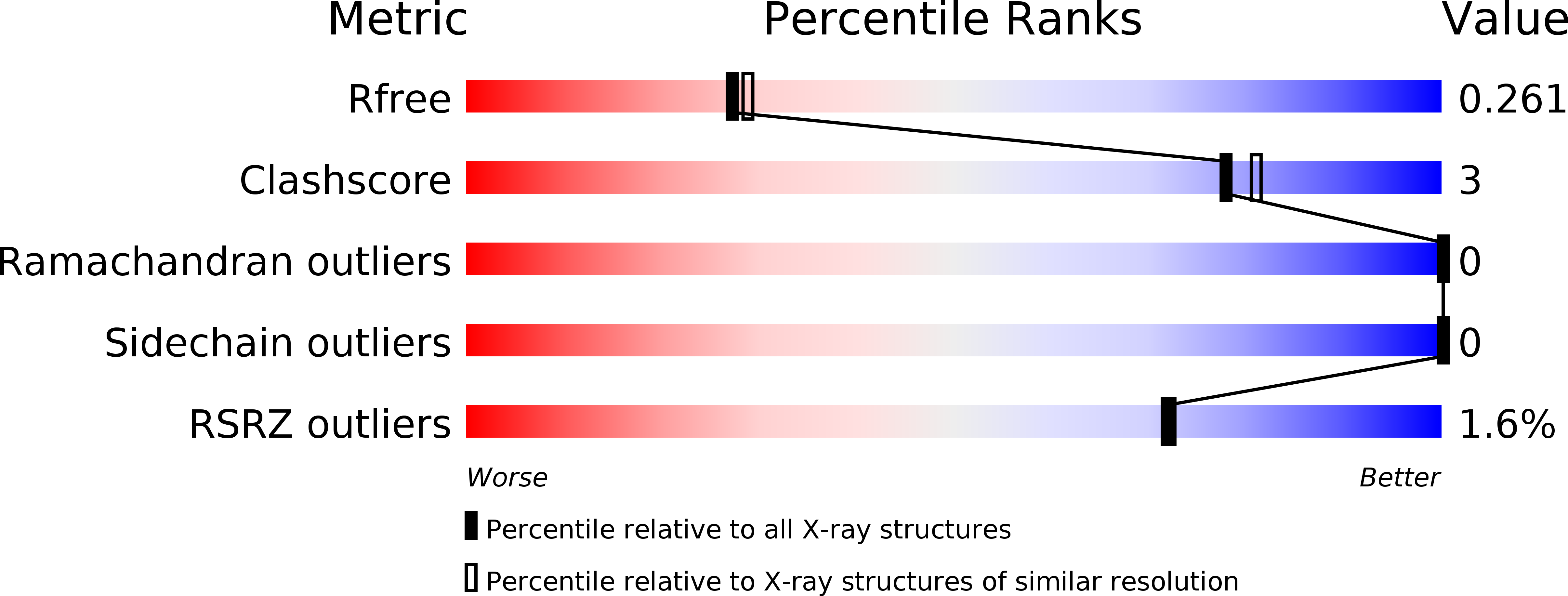Palladium-mediated enzyme activation suggests multiphase initiation of glycogenesis.
Bilyard, M.K., Bailey, H.J., Raich, L., Gafitescu, M.A., Machida, T., Iglesias-Fernandez, J., Lee, S.S., Spicer, C.D., Rovira, C., Yue, W.W., Davis, B.G.(2018) Nature 563: 235-240
- PubMed: 30356213
- DOI: https://doi.org/10.1038/s41586-018-0644-7
- Primary Citation of Related Structures:
6EQJ, 6EQL - PubMed Abstract:
Biosynthesis of glycogen, the essential glucose (and hence energy) storage molecule in humans, animals and fungi 1 , is initiated by the glycosyltransferase enzyme, glycogenin (GYG). Deficiencies in glycogen formation cause neurodegenerative and metabolic disease 2-4 , and mouse knockout 5 and inherited human mutations 6 of GYG impair glycogen synthesis. GYG acts as a 'seed core' for the formation of the glycogen particle by catalysing its own stepwise autoglucosylation to form a covalently bound gluco-oligosaccharide chain at initiation site Tyr 195. Precise mechanistic studies have so far been prevented by an inability to access homogeneous glycoforms of this protein, which unusually acts as both catalyst and substrate. Here we show that unprecedented direct access to different, homogeneously glucosylated states of GYG can be accomplished through a palladium-mediated enzyme activation 'shunt' process using on-protein C-C bond formation. Careful mimicry of GYG intermediates recapitulates catalytic activity at distinct stages, which in turn allows discovery of triphasic kinetics and substrate plasticity in GYG's use of sugar substrates. This reveals a tolerant but 'proof-read' mechanism that underlies the precision of this metabolic process. The present demonstration of direct, chemically controlled access to intermediate states of active enzymes suggests that such ligation-dependent activation could be a powerful tool in the study of mechanism.
Organizational Affiliation:
Department of Chemistry, University of Oxford, Oxford, UK.
















